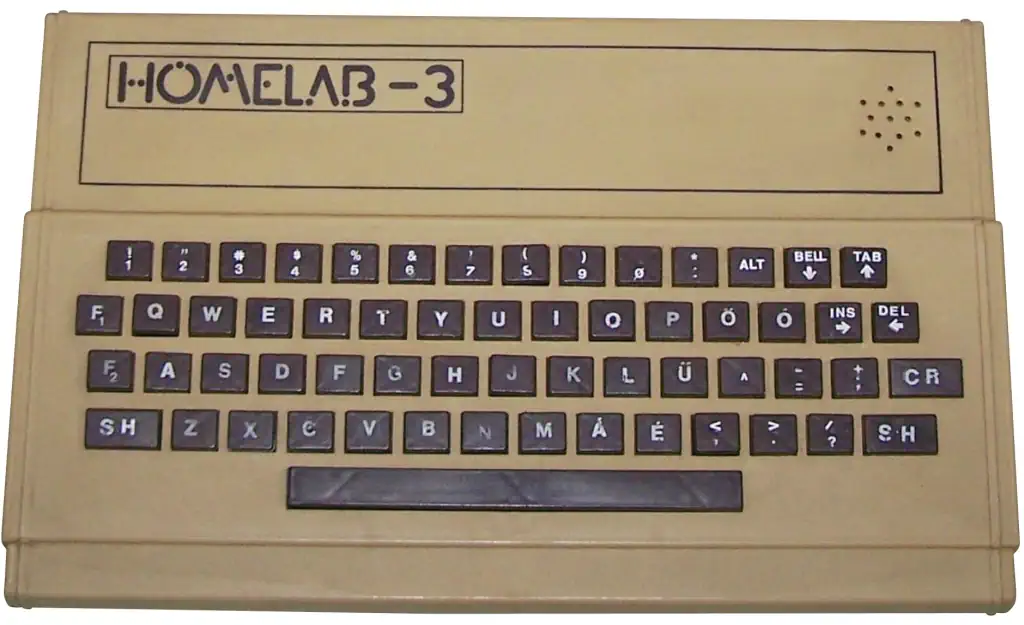The HomeLAB III
The HomeLab III can have both static and dynamic memory, from 2kByte up to 64kByte. The computer can display 32 lines of text with 32 or 64 characters. This can be selected by a switch or a jumper. The reason for the 32 character option was because TVs at the time were not good at displaying higher resolution images, and the 64 characters would blur.
The keyboard has an 8x10 matrix, but only 60 of these positions were used for buttons. This includes Hungarian letters, independent cursor keys and two function buttons. A cassette recorder could be connected to the machine for storage.
The computer also has a PIO. This PIO can be arbitrarily programmed by the user. So not only was the port capable of handling a printer, but it could be used for any 16-bit measurement, control, or game input. The machine is powered by a 5V power supply at 800mA.
A text-to-speech extension was also made for the HOMELAB III. With this extension connected, the machine can turn into speech any BASIC program text or Hungarian text, and even the stressing of sentences is implemented. The software of the machine is virtually the same as the BASIC of the previous model. There are some differences due to different capabilities, but the language is backwards compatible.
Brief history of HomeLAB
In the spring of 1982 József Lukács and his younger brother Endre decided to create a computer that was accassible to the Hungarian youth. They designed a computer, the Homelab II, whiich was manufactured under the name Aircomp 16. The computer was pdoduced by a small company called Personal GT. The later models of the Homelab computers were produced by the Color Industrial Co-operative in Dombóvár.
The Aircomp 16 was expensive to produce and the brothers ran out of funding. Ultimately when Homelab III was produced, the brothers released the documentation and basic units like the PCBs so users could purchase the computer as a kit, and assemble their own at home. The Homelab computers were built in large numbers by amateurs at home, based on the circuit diagrams published in the MikroszámÃtógép Magazin.
RAM max: 64kB
VRAM: 4kB shared Display Chip none Display 64x32 monochrome text Best Text 64x32 text Sprites none System OS BASIC in ROM Storage External Tape

